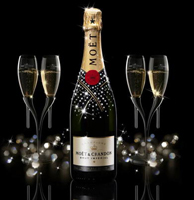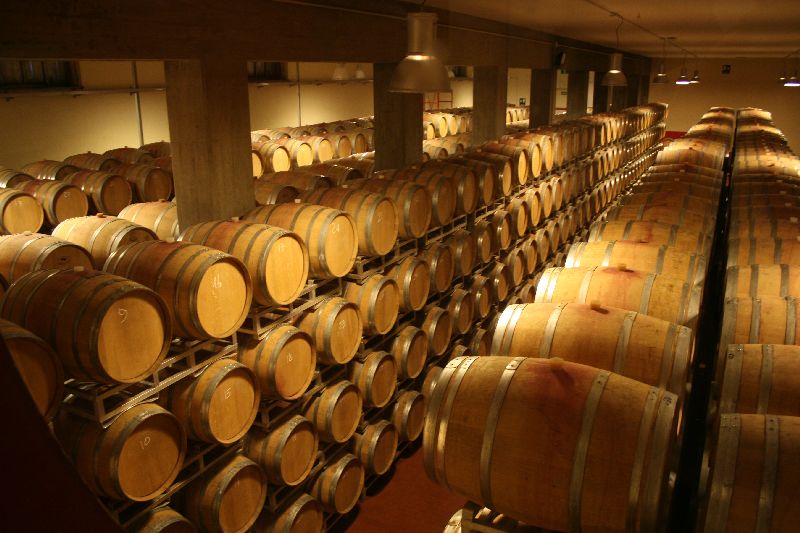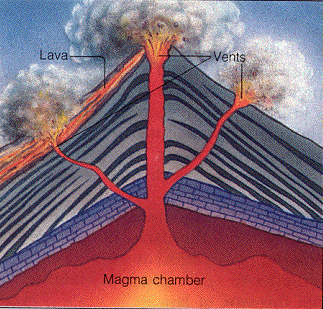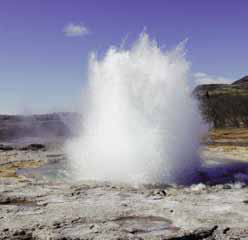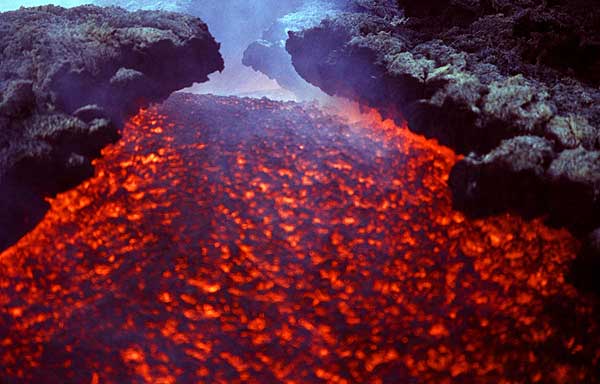Wine, wine, wine... the drink of noblemen, gods, gentlemen and others with sophisticated taste. Drinking wine is delightful, some people consider it as even an art.
It is said that one glass of wine per day can cure better than many modern medicaments. It can presumably reduce the amounts of cholesterol in your blood-vessels and otherwise in the whole bloodstream. Moreover, it supports your digestive system and it is an important antioxidant.
I would like you to learn something more about the history of this drink as well as production and types of wine.
The oldest wines can be traced back in the time about 14,000 years BC! not far from Geneva lake, Switzerland. Those people used to drink partly fermented must. Later on, wine was recognized by Sumerians and Egyptians as a noble drink. In fact, Egyptians invented bottles for wine which they covered with hieroglyphes.
However, it were Greeks, who elevated the act of drinking wine to a social event and gradually to an art. Wine became the source of inspiration for many artists, writers and poets.
Even more important nation, to which wine owe its worldwide recognition, were Romans. These were successful warriors and invaders and they brought grapevine as well as the Greek tradition of wine into many parts of the at-that-time-known world.
Surprisingly, Greeks and Romans always mixed their wine with water.
Well, enough about history :-)
Have you ever thought about how wine is made? Of course, everyone would remeber it is from grapes, but what the process itself?
First, what is wine? It is an alcoholic beverage, made of fermented fruit juice, usually from grapes.
The fine process of making wine includes several steps:
1. Growing wine at vineyards
Every experienced winemaker would probably confirm you, that ''growing wine properly is the half of the success'' In fact, there are many factors to be concerned with : Right average temperature, enough moist for vineyards, the quality of the breed of grapevine and right soil are only few among others.
We can also conclude by our own brilliance of mind their other claim : '' Wine is grown at vineyards, not in cellars''
2. Pressing of wine
Within this process, we add preassure to wine in order to separate wine or juice from grapes and grape skins. It is very vital, because it directly influences the final quality of the wine. The more meticulous pressing, the better quality of a wine. It is an imperative to achieve the highest possible yield from grapes while not extracting particles of bitter taste like tannines. The liquid created by pressing before fermentation is called must, or stum.
For instance, in the area of Champagne, France, there is strongly stressed the quality of pressing and as a result, we have one of the best wines worldwide from that area.
There is one foregoing process called 'crushing' where, especially by small winemakers, we can perceive barefoot people standing on a top of a wine vessel trampling it. (I would say, it is very known from films)
3. Fermentation
This is process, where chemistry for the first time steps in.
Basically, we transform simple carbohydrates like glukose or fruktose
| Glukose |
into alcohol (ethanol) and carbon dioxide (which is released in the air in the case of non-sparkling wine)
C6H12O6 (carbohydrate) + catalyst yeast = 2 C2H5OH (alcohol) + 2 CO2 (carbon dioxide) + heat
It is very important to maintain keen attention on this process. Fermentation runs either in old oak barrels or in stainless tanks in larger facilities.

We have to also mention yeast (eukaryotic micro-organisms classified as Fungi) which actually run the fermentation by their biochemical way.
Since we have more than 1500 species, we can get unpredictable results depending on the exact types of yeast that are present, thus, cultured yeast is often added to the must.
During fermenantion, the vessel with wine absorbs heat and therefore, winemakers try to cool the vessels in order to prevent aromatic compounds from evaporating. Moreover, whatever type of wine we want to produce, we should always keep it clean in the cellar with wine vessels in order to avert microorganisms to proliferate there.
Apart from alcoholic fermenation, we have also malolactic fermentation. Here we converse tang-tasting malic acid to lattic (or milk acid) which has more mild and pleasant taste and aroma.
 |
| malic acid |
 |
| latic acid |
By now, after the three previous steps, we have somehow ''raw'' wine and we have to do several more things in order to get it bottled and delivered to our consumption. :-)
a) Preservation additives: It generally means suplhurization of wine. A small amount of suplhur dioxide is added to wine and it naturally creates a thin layer above the wine in the barrel a thus it protects wine from outside environment.
b) Clarification of wine: this process involves removing insoluble and suspended materials that may cause a wine to become cloudy, gassy, form unwanted sediment deposit or tartaric crystals.
It includes fining and eggwhite (or bentonite) are for this usually used.
Then there is of course filtration - we use either natural gravitation forces or sometimes centrifuges. Nonetheless, some red wines are not filtrated at all.
Last very interesting process, I haven't been aware of at all, is flotation. Here we inject some amount of oxygen or nitrogen gas in the bottom of the tank and as it goes up through the vessel, it adsorbs grape fragments and other small solids.
| description of flotation, here in mining as I haven't found any pic from flotation of wine |
c) Aging of wine
is defined as ''ability to potentially improve in quality, distinguishes wine from most other consumable goods''
In fact, the unique composition of each wine, depending on factors like region of growth or a breed, gives to it sometimes possibilities to alter its chemical composition (sugars, acids and so one) through years which can result into more delicious savoring for a consumer.
For wine aging, the oak barrels, or (barriques) are used. they not only preserve aging wine in natural environment, but also can improve the taste themselves. They can absorb some bitter particles (like some acids or tannines) or for example add to a wine a tone of vanilla, when the oak wood is saturated with vanilla.
and finally,
Differences among wines
As we know, we can sort wines into many and many cathegories. I don't want to borther you with all of them , so I am going to elaborate on it only very briefly.
Red x White
The difference is not only in breed of wine, but also in processing it.
Red wine is made from the must (pulp) of red or black grapes that undergo fermentation together with the grape skins.
White wine is made by fermenting juice which is made by pressing crushed grapes to extract a juice; the skins are removed and play no further role.
Amount of sugars
we can also divide wines according to the content of sugars, which did not undercome fermentation.
Dry wine : < 4 grams of remaining sugar/liter
half-dry wine: 4,1–12 grams of remaining sugar/liter
half-sweet wine: 12,1–45 grams of remaining sugar/liter
sweet wine: >45 grams of remaining sugar/liter
other types of wine : we of course have sparkling wines saturated with carbon dioxide, or mead, which is wine made together with honey... and soo many other types :-)
 |
| sparkling wine |
 |
| Mead |
Maybe after you've read this article, you've become a little thirsty...If yes, I would recommend a glass of wine to you.
After all...it is healthy :-)
Sources:
http://gustoumbrianwinetours.files.wordpress.com/2010/05/red-wine.jpg
http://milasko.blog.cz/0810/historie-vina-1-vino-v-praveku-a-staroveku
http://www.global-wines.cz/vyroba-vina
http://www.vinohelbea.com/stranka/o-vine/zdravotni-ucinky-vina/6/
http://www.pairing-wine.com/images/post_images/winehistory.bmp
http://cs.wikipedia.org/wiki/V%C3%BDroba_v%C3%ADna
http://t1.gstatic.com/images?q=tbn:ANd9GcSg-fCu279DwpihSkm-ruT_7xiTy6yap4fMK-gsyvwSGUvEjvDpwg&t=1
http://www.hotel-rakovec-brno.com/client_data/21/user_files/V%C3%ADno.jpg
http://www.theodora.com/wfb/photos/cyprus/collecting_grapes_cyprus_photo.jpg
http://en.wikipedia.org/wiki/Tannin
http://santostefano.ve.cafeinsomnia.org/_media/uploads/images/process-october.jpg
http://naturfag1sta2010.pbworks.com/f/1298923859/Glukose.JPG
http://daria.no/skole/doc/html/8833.doc-filer/image007.jpg
http://www.hogacompany.com/fermentcubasWhite2500L.jpg
http://www.weimax.com/images/Iby_Hospital_Clean_Cellar.gif
http://en.wikipedia.org/wiki/Tartaric_crystals
http://www.alkoholweb.cz/wp-content/gallery/vino/vino-5.jpg
http://www.dost-dongnai.gov.vn/portals/0/tinkhcn/200810/20081027/egg%20whites.jpg
http://vintagetexas.com/blog/pics/TexasWineCellar.jpg
http://www.altissimoceto.net/Image/NinoNegri/barrique.JPG
http://www.drversus.com/wp-content/uploads/2011/05/red-wine-and-white-wine.jpg
https://www.illinois-wine.com/store/landing-page/sweet-wines_400x367.jpg
http://www.weingut-soellner.at/en/Alle-Weine-klein.jpg
http://oysterfoodandculture.com/wp-content/uploads/2009/06/lurgashall_christmas_mead.gif






